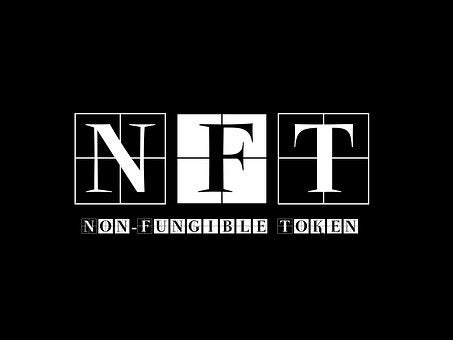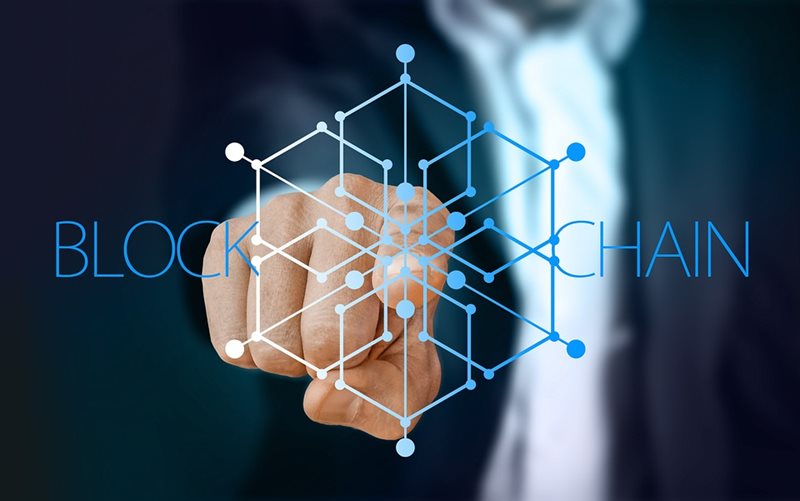Non-Fungible Tokens: Buzzword Gamechanger.
“The Non-Fungible Token craze has earned Millions for some creators, what's the story behind this most recent new trend and what are the broader implications?”

A member of the CoA team presents a hot topic to the group during a session at each monthly team meeting. The first speaker was Fabrice Niyimpaye, our UI/UX designer, and his topic was Non-Fungible Tokens (NFTs). Considered by some to be the most recent fad that's taking over the internet. This subject caught my full attention and is a worthwhile subject to discuss.
You may have heard of a 10-second long video, an artwork that sold for $6.6 million in late February, or perhaps the video clip of a Lebron James slam dunk that a fan paid $208,000 to own. These transactions are part of a new digital investment craze called NFT that has exploded over the past 3 years. So, the question is; what is it and what’s behind this latest trend?
What’s behind this latest hype?
First, look at this tweet. The first tweet ever tweeted in the history of Twitter! The tweet was by Jack Dorsey, one of the co-founders of Twitter, and this tweet was somehow just purchased for $2,915,835.47. And not only a tweet, but a single JPG also sold for $69 million, becoming the highest-selling non-fungible token (NFT) ever, and the NBA is selling a short moment of basketball games for hundreds of thousands of dollars. These are all sorts of digital things that people are purchasing a version of for lots of money. There are three simple letters you need to understand, to understand what’s going on here.

Those letters are NFT:
A Non-Fungible Token is referred to as NFT. That explains it, so there you go. That makes sense, right?
But one of the problems with this subject is that individuals use terms like blockchain, crypto art, Ledger, and NFT without really explaining what they mean. assuming that everyone will get it. Nope! Not everyone understands what it means.
An NFT (Non-Fungible Token) or Non-Replaceable Token is a digital asset that exists completely in the digital universe and it is the only one on the planet that exists.
Most people don’t understand what exactly an NFT is, and think it’s a scam when they say, “Why would you pay for an NFT when you can look at it for free”? And that makes sense.
In the economy, everything is either fungible or non-fungible. Let's say Mona Lisa is non-fungible because there is only one; nevertheless, you can go fetch a sack of rice and don't care which sack you take. And normally, non-fungible objects are simply worth more than fungible ones due to their rarity.
According to Johnny Harris,(an American filmmaker, journalist, and YouTuber). This story is much bigger than three million dollar tweets or an NBA short moment of a game sold for millions and millions of dollars. It is more about human psychology and how the way we value things is shifting because of technology.
A technology that some people think may revolutionize our society while at the same time accelerating climate disasters.
For example, let’s use this Tweet of Jack Dorsey, yes there are millions and millions of other tweets on Twitter, but there will be only one first tweet in history. And if you go on the website and you pay for this tweet, you are going to have this specific tweet because it is a Non Fungible tweet.
So let's talk about the T, which means Token. This word has a strong internet presence. And to understand this word, you must first understand the concept of blockchain.

What is a blockchain?
A type of database in which a collection of computers are operated by different individuals in different locations, constantly adding information. Digital public ledger where individuals are constantly adding information about digital crypto transactions.
Consider blockchain to be similar to banks, where more and more of your money is just a number written on a screen, the result of a series of transactions. You don't barter with physical items, and you don’t use cash as much. As a result, keeping meticulous records of every transaction becomes critical for the bank. We believe the bank handles this correctly. For centuries, banks and other middlemen have kept things like this running quite smoothly. Thanks to the banks!
However, with the rise of the internet, people started to wonder. Is there a way that we could do this, coordinate some transaction of transfer of money between two people without the bank? The result is a concept called the blockchain. The blockchain performs the same function as the bank, but instead of doing so privately on my bank account, all transactions are recorded publicly on the internet. The point here is that the group of computers verifies the legitimacy of each transaction by monitoring each transaction to ensure that it adds up.
In the bank example, we discussed blockchain as a means of verifying currency transactions. One pays you this much, and you pay this much, and now everyone knows how much money everyone has because it's all public information.
What if we applied this to something other than money or currency? Let's say you're looking at the ledger one day and it looks like a Malaysian businessman wants to give Jack Dorsey 3 million dollars in coins in exchange for a little token or a little digital certificate that says the tweet is now owned by a Malaysian businessman.
The blockchain only cares about one thing: does the Malaysian businessman have three million dollars worth of coins? So, a bunch of computers all over the world look at the entire list of transactions and say, yeah, this guy has more than three million dollars worth of coins, and they approve the transaction, and now it is written in an unalterable public record that this Malaysian businessman owns this tweet. The token has been passed on to a new owner.
The token that is not fungible (NFT). If there's anything that makes human psychology value something, it's when an entire group confirms that it's true and that there's only one of them. There are thousands of NFTs of various types, some music is given tokens, and a lot of art is minted as tokens and bought and sold.
The reality is that the technology that serves as the backbone for all of this is based on the ledgers mentioned above, which serve as the conceptual heart and soul. Still, mechanically, or physically, it is based on computers performing various small calculations all day and night. These aren't real computers; they don't have memory, a screen, or anything else. They do nothing but micro-calculations all day and night.

Ethereum
On a high level, most NFTs are part of the Ethereum blockchain. Ether (ETH), like Dogecoin (DOGE), is a cryptocurrency, but the Ethereum blockchain also allows these NFTs to function differently from digital currencies.
Sustainability and negative implications
The Ethereum blockchain consumed 33 terawatt hours of electricity in 2021. And you're probably wondering what a terawatt hour of electricity is. That is the same amount of power as Serbia (the whole country) once consumed. This is a reminder that electricity is typically generated by plants that burn fossil fuels, releasing carbon into the atmosphere, which isn't friendly to the environment.
The power consumption of the Ethereum blockchain was exploding, quadrupling in a concise time and it wasn’t showing any sign of slowing down. This was a lot of energy. And to think that that energy wasn't being used to move people around or produce things, only used to crunch numbers in a weird computer warehouse somewhere so that someone can buy a token of a thing that only exists on the internet. I mean there are a lot of whys on my end! It’s such an ironic moment, where it’s like this is all digital. You can't touch it or hang it on your wall, but it has deeply real-world effects.
As previously stated, the Ethereum blockchain consumed 33 terawatt hours of electricity in 2021, and everyone was concerned about how bad this was for the environment. However, things have changed today because Ethereum's energy expenditure has been reduced by 99%. The Ethereum proof-of-stake mechanism consumes only ~0.0026 TWh/yr across the entire global network.
Future implications and tech investment and hype
I just want to finish this article by talking about what this might mean for our world going forward. This started as hype, and that’s the whole point. I mean these speculative markets were all about hype. We see this all with new technologies and new things that people get excited about. And they swarm it with their investments and the price goes up, and then something happens.
For example, the internet was taking off in the 1990s, and people were realizing that you could make money on the internet. The stock market was soaring, increasing 400% in five years. This is primarily due to the amount of hype and excitement surrounding these new internet companies. This rise peaked in March 2000 (Dot com bubble), and then the bubble burst, and many of these companies either went bankrupt or lost all of their exciting valuations.
But did that mean the internet was no longer available? Did this mean that the internet business had died? No! On the other hand, companies have gone on to reshape our world. I mean, believe it or not, we are currently in that stage of NFTs. It's hype, novel, and exciting, but it's forcing our minds to reconsider how we validate and verify things.
Conclusion
If existing technology suddenly removed the centralized middleman, allowing transactions between people to be authenticated, verifiable, and much smoother, that could change the world. Not sure if the bubble will burst; just know that the world is in a crazy period where most people are wrapping their heads around new technology and what it means, and will eventually adopt it. This will no longer be crazy or novel; prices for NFTs may fall, but the technology that forms the backbone for how these are performed will most likely remain, be developed further, and form the basis for digital banking in the future.
